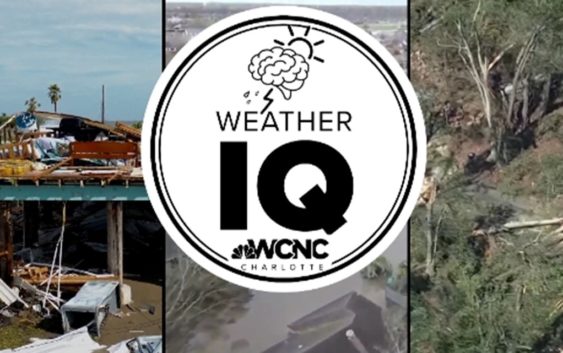- Flooding lingers in Liberty County neighborhoods near Trinity River with more rainfall expected
- North Carolina behind on hurricane preparedness, study shows
- North Carolina way behind on hurricane preparedness, study shows
- New hurricane preparedness report doesn't rank North Carolina well
- New hurricane preparedness report doesn't rank North Carolina well
Weather IQ: How Hurricanes Form

Hurricane season has begun but do you know how the infamous storms form? The answers in this weeks Weather IQ.
CHARLOTTE, N.C. — June 1st begins the 183 day Hurricane Season that ends November 30th and peaks September 10th. But for them to form conditions have to line up, and the better they do, the stronger they become. Let’s raise your Hurricane IQ!
The Ingredients:
To bake a hurricane here are the basic ingredients you need!
- A pre-existing weather pattern. Hurricanes first start as a tropical wave.
- Surface Water Temperatures must be 80°F or warmer down to a depth over 150 feet.
- A low wind shear environment.
- The atmosphere has to be juiced up with moisture. Dry Saharan dust and dry air can kill a storm.
How Hurricanes Form:
Over warm ocean waters. Rising moisture condenses with cold air forming multiple thunderstorms. This flow left undisturbed will eventually start to rotate into a low pressure system due to the spin of the earth.
More air rushes in and more thunderstorms form releasing more heat and power into the storm.
When the circulation becomes a closed low with a well defined center, the storm is officially a tropical cyclone.
When maximum surface winds are 38 mph or less. It will be numbered as a tropical depression.
Winds at 39-73 mph are tropical storm strength and will give the storm a name.
Once the winds within that storm reach 74 mph, a hurricane is born.
This is the ideal structure of a hurricane, too much wind shear will disrupt the formation. The faster these warm core storms spin, the more likely the calm eye wall will form.
The Hurricane Scale:
The strength of a hurricane is measured using the Saffir-Simpson Scale. This scale was developed in 1971 by Herbert Saffir and Robert Simpson. The scale separates into 5 different categories divided by wind speeds.
Category 3 or greater, it is classified as a MAJOR Hurricane. Causing devastating to catastrophic damage. Category 5 winds reach over 157 mph. There is no category 6 nor is there any new talk of changing or expanding the scale.
All tropical cyclones, regardless of the wind speeds can bring a devastating amount of rainfall and flooding, especially the slower they move.